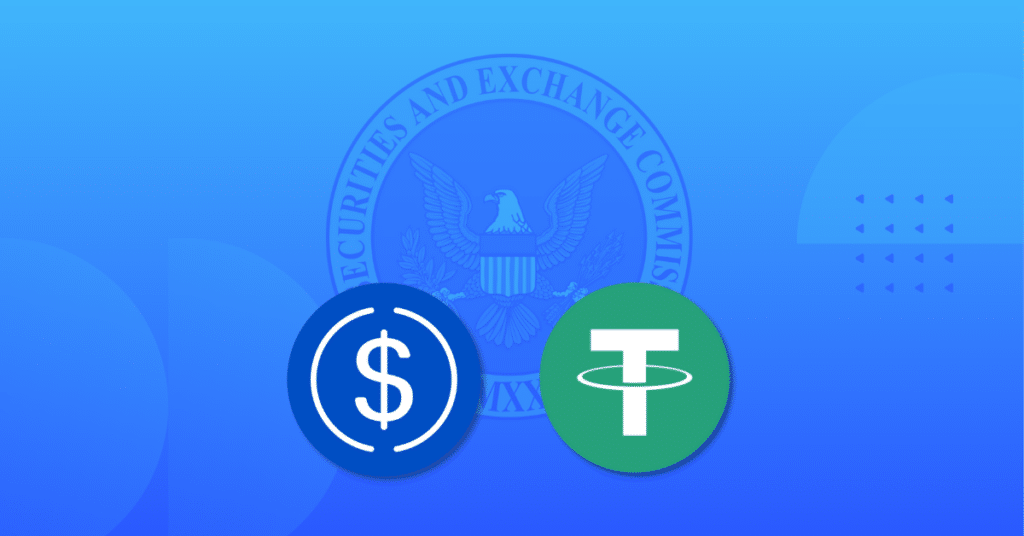Welcome to This Week in Crypto—your quick, beginner-friendly roundup of the biggest stories shaking up the world of digital currency.
Here’s a quick look at what’s been happening:
- The SEC says not all stablecoins are securities, giving clearer guidance on dollar-backed coins while leaving room for future rules on yield-bearing tokens.
- PayPal and Venmo expand their crypto support, adding Solana and Chainlink to their platforms to make crypto even more accessible for everyday users.
- Satoshi Nakamoto turns 50—at least on paper. The birth date listed by Bitcoin’s creator is loaded with symbolism and ties back to a pivotal moment in U.S. monetary history.
Let’s dive into what each of these stories means and why they matter for anyone stepping into crypto for the first time.

SEC Says Some Stablecoins Aren’t Securities—Here’s What That Means
The U.S. Securities and Exchange Commission (SEC) recently said that some stablecoins—digital currencies tied to the U.S. dollar—are not considered securities. This is big news because it helps clear up legal questions around certain types of stablecoins that are backed by real dollars and other safe, easy-to-sell assets. Still, the SEC didn’t give an answer about other kinds of stablecoins, like ones that pay interest or use computer programs to keep their price stable.
Why does it matter if something is a security?
If a token is considered a security, it must follow strict financial rules under U.S. law. That means companies would have to register with the SEC, share a lot of financial information, and follow tough regulations, just like stocks do. This can make things more expensive and complicated for crypto companies and may even limit how people can buy or sell those tokens.
Key Points:
- Stablecoins that are backed by U.S. dollars and can be traded 1-to-1 for cash are not considered securities by the SEC.
- The SEC didn’t comment on interest-earning or algorithm-based stablecoins, which means they could still face future rules.
- Tether (USDT) and Circle (USDC) are the two biggest stablecoins, with a combined value of over $200 billion.
This update gives stablecoin users and companies more clarity, at least for the most common types. But with other tokens still under question, the full story of crypto regulation is far from over.

PayPal Expands Crypto Options with Solana and Chainlink Support
PayPal and Venmo are expanding their crypto offerings by adding support for Solana (SOL) and Chainlink (LINK), two of the top cryptocurrencies by market value. Soon, users will be able to buy, hold, sell, and send these coins directly within the apps, just like they already can with Bitcoin and Ethereum. This move signals PayPal’s continued push to make crypto more accessible for everyday users.
Key Points:
- Solana and Chainlink are being added to PayPal and Venmo’s list of supported cryptocurrencies.
- The update gives users more options and flexibility when managing crypto in their PayPal and Venmo accounts.
- PayPal has been steadily growing its crypto features, including launching its own stablecoin (PYUSD) and supporting Ethereum Name Service (ENS).
As big platforms like PayPal make crypto easier to access, more people are getting involved in digital currency for the first time. If you’d like to buy crypto using PayPal, you can also do it on our Buy with Card page—just choose PayPal at checkout to get started.

Bitcoin’s Mysterious Founder Turns 50, But Is It Just Symbolism?
Satoshi Nakamoto, the mysterious creator of Bitcoin, is celebrating what would be his 50th birthday—at least according to the birth date listed on his public profile. The date, April 5, 1975, is believed by many to be more symbolic than real, pointing to a key moment in U.S. monetary history. Whether or not it’s his actual birthday, the crypto world sees it as a meaningful day that ties closely to Bitcoin’s deeper purpose: financial freedom.
Key Points:
- Satoshi Nakamoto’s profile on the P2P Foundation lists his birth date as April 5, 1975.
- On April 5, 1933, the U.S. government banned private gold ownership to fight the Great Depression, forcing citizens to hand over gold to the Federal Reserve.
- That ban lasted for over 40 years until it was finally lifted on December 31, 1974, making April 5, 1975 a symbolic “rebirth” of financial freedom.
Bitcoin was created in 2008 to give people more control over their money. Whether the birth date is real or not, it reflects the values behind Bitcoin: freedom, privacy, and financial independence.



